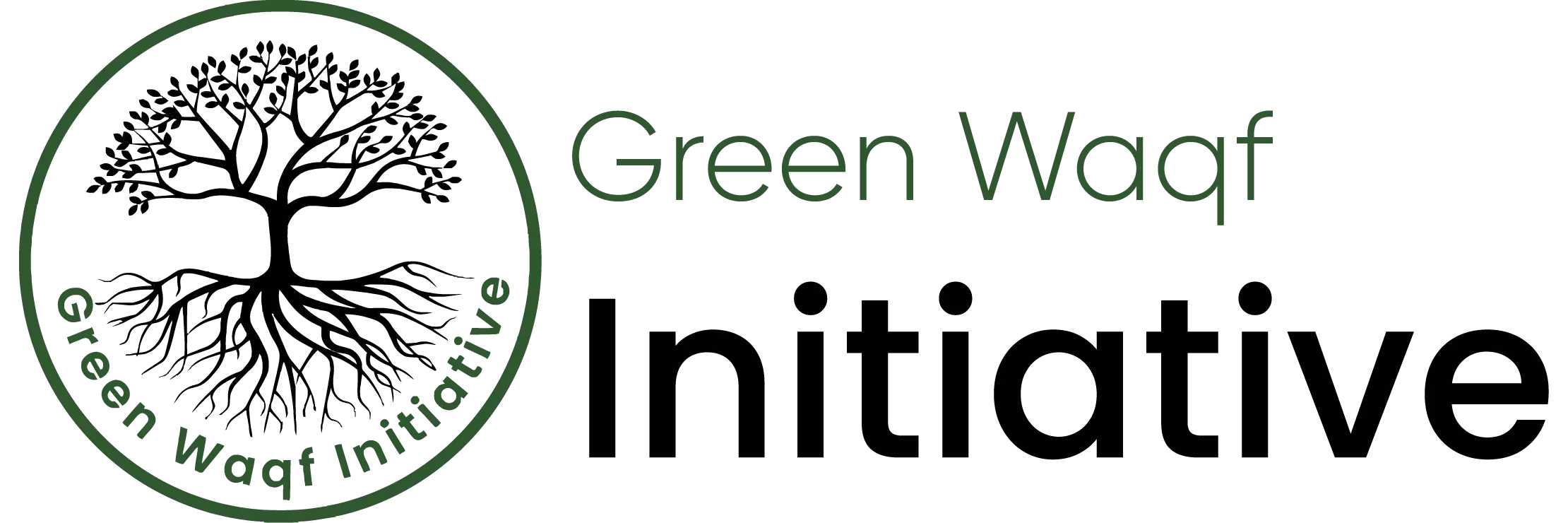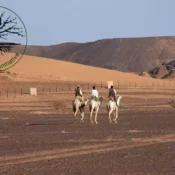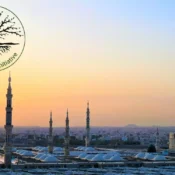
Saudi Arabia Environmental Profile
These environmental profiles were produced as part of the Green Waqf Initiative by the
Islamic Chamber of Commerce, Industry and Agriculture (ICCIA). ICCIA believes that
the Islamic concept of Waqf can be used as a social financing mechanism to combat
climate change. Through Waqf, the land is decommodified; therefore, it can be used
only for specific purposes defined by the owner. These purposes can include
reforestation, land revitalization and research centers, among others.
This environmental profile has been developed to assess the ecological situation in
Saudi Arabia and is part of a series that covers all ICCIA member countries. These
profiles are meant to be used as a source to assist in policy dialogue, stakeholder
engagement, and strategic planning and to help educate and raise awareness about the
social, cultural and economic risks associated with climate change. The profiles
provide relevant information on pertinent public and private sector policies and
programs and the country's adaptation priorities and potentials.
Saudi Arabia Environment Profile Team
Author: Fatima Faisal
Editor: Safia Hussain
Table of Contents
- Saudi Arabia Environment Profile
- Saudi Arabia Environment Profile Team
- About ICCIA
- About the environmental profile
- Section 1: Country Overview
- Section 2: Sector-wise climate change causes and effects
- Conclusion & Recommendations
About ICCIA
The Islamic Chamber of Commerce, Industry, and Agriculture, an institution affiliated with the
Organization of Islamic Corporation (OIC), aims to strengthen collaboration in the fields of trade,
commerce, information technology, banking, insurance, shipping, joint venture, and many others
within member countries.
ICCIA is the sole representative of the private sector in 57 Islamic member countries and primarily
focuses on creating a knowledge platform for the private sector of the Muslim countries to connect
and learn. It provides visibility to the star performers for future growth and access to new markets.
Additionally, it lays out policy recommendations to enable a private-sector-friendly business
environment in policies, processes, paperwork, and payment system integration, to name a few.
Finally, ICCIA plays an integral role in promoting member country products and increasing access
between home and foreign markets.
About the environmental profile
Several experts claim that insufficient climate control policies have become a 'very serious' concern
and have been significantly harming a considerable proportion of the world's population.1 Some top
reasons behind climate change include heat-trapping greenhouse gasses, deforestation, use of heavy
machinery, powering buildings, and cutting down on farming livestock.
ICCIA's recent initiative focuses on promoting environmentally friendly and sustainable practices in
member countries to enhance societal impact, minimize waste, and improve living standards.
Climate change in Saudi Arabia has been a persistent concern since more than a decade now. Saudi
Arabia experiences intense dry climatic conditions, limited water resources, and highly vulnerable
agricultural fields.
Section 1: Country Overview
General overview of Saudi Arabia
A sparsely populated kingdom of Middle East, Saudi Arabia is the largest country in the Arabian
Peninsula. It consists of a population of nearly 36 million with more than a third of the population
made up of expats (13.49 million).
Saudi Arabia has a diverse geography with various forests, grasslands, deserts, and mountain ranges.
Climate in the country is also diverse and differs from region to region. Temperature in desert areas
can increase more than 110 degrees Fahrenheit while temperatures in north and central region can
drop below freezing during winters. The Hejaz, located in its western highlands near the Red Sea, is
the cradle of Islam and home to Islam's holy cities, Mecca and Medina. Najd ("Highland"), a huge
arid zone populated by nomadic tribes until recently, is in the country's geographic heartland. To the
east, are the country's enormous oil resources, which have made Saudi Arabia associated with
petroleum wealth since the 1960s.2
Over the past few years, Saudi Arabia has seen a vast development in trends and culture. Saudi
Arabia's real GDP growth is forecast to hit 8.0% in fiscal year 2022, according to the Saudi finance
ministry in a pre-budget statement issued on Friday.3
Waqf is a crucial part of Saudi’s economy. Saudi Arabia is home to the most valuable waqf industry
in the world. Because 74% of the endowments of Waqf entities in Saudi Arabia are unknown, with
missing information and reports, many charges have been levelled regarding the inefficiency and
inadequacy of current waqf regulations and standards to control.4 The Saudi Vision 2030 emphasizes
the role of Waqf in financing and strengthening socioeconomic programs, with a projected
development plan of SR 350 billion by 2030.
In 2015, the United Nations introduced the 2030 Agenda for Sustainable Development as a plan of
action for people, environment, economy, peace, and cooperation. In the same year, the Kingdom of
Saudi Arabia (KSA) launched Vision 2030, with the goal of reducing the KSA's reliance on oil,
diversifying and sustaining its economy, and improving public well-being. Achieving the ambitious
and comprehensive SDGs and Vision 2030 goals would necessitate novel ideas and solutions capable
of integrating and balancing the economic, social, and environmental components.
As mentioned above, because of its distinctive Islamic stance, the KSA is regarded an Awqaf-rich
country. Several legislative reforms occurred throughout the years, culminating in the establishment
of the General Authority for Awqaf (GAA) in 2015 to monitoring, managing, expanding, and
promoting Awqaf in the Kingdom. Present Awqaf in the Kingdom of Saudi Arabia demonstrate
flexibility in the 'what, where, who, and how' of their philanthropic efforts, with excellent potential connection with Vision 2030 and the SDGs. It is estimated that KSA was home to more than 113,000
Awqaf institutions in 2020. It was also noted that the kingdom owned more than SAR 235 billion in
Awqaf assets, SAR 7.4 billion in spending toward Vision 2030 aligned fields, and SAR 6.1 billion in
spending toward SDGs aligned fields.5
Saleh Al-Rajhi Awqaf is a good example of Awqaf's commitment to sustainable agriculture and food
security to lay out here. Sheikh Saleh bin Abdulaziz Al-Rajhi endowed fields of 5,466 hectares and
containing approximately 45 different varieties of date palms, which entered the Guinness Book of
World Records in 2011.6 Awqaf's investment strategy in Saudi Arabia is very much connected with
the sustainable development goals through its organic farming, in addition to its contribution to many
philanthropic and development areas through its revenues.
Climate change risks
Climate change is a persistent problem in the Kingdom of Saudi Arabia. The overwhelming scientific
opinion is that rising global temperatures and rapid climate changes offer immediate and long-term
threats to the country's physical and ecological surroundings and its residents' well-being. Heavy fuel
use, urban development, land use changes, and deforestation are identified as key causes of
environmental anomalies such as heat waves, storms, drought, rising precipitation, floods, and other
kinds of weather extremes.
Cities are especially of concern due to rising urbanization prompting a growing demand of energy in
specific urban regions. However, that doesn’t mean climate change in rural regions of Saudi Arabia
are of no concern. Instead, rural and urban dwellers together pose a significant threat to climate
change conditions in Saudi Arabia.
The country’s ecosystems are fragile due to the dry climate, water resources are scarce, and
agricultural areas are subject to environmental shifts. According to the 2007 Intergovernmental Panel
on Climate Change study, climate change has generated worldwide changes in precipitation levels,
which have exhibited in Saudi Arabia as higher rainfall levels.7 This increased rainfall, along with the
existence of unplanned communities, has resulted in heightened risks such as flash flooding in major
cities.
The following graph shows the monthly climatology of Mean-Temperature and precipitation in Saudi
Arabia rom 1991-2020.8

The following diagram shows the observed annual Mean-Temperature 1991-2020 in Saudi Arabia.9

Climate change policies in Saudi Arabia
Circular Carbon Economy National Program
The goal of this program and its related framework is to enable circular economy elements in Saudi
Arabia. It adheres to the 4 Rs logic to reduce (the creation of CO2 and GHGs as byproducts),
reuse, recycle, and remove. It emphasizes the utilization of cutting-edge technologies.
The primary mission of the program is to support and promote Saudi Arabia’s CCE framework which
is focused on emission monitoring with the use of socio-economic development. The program has
three strategic objectives:
- Climate Protection: reduce CO2 emissions while cutting costs by implementing CCE
applications and ensure that all possible CO2 mitigation measures are used. - Socio-Economic Impact: encourage the development of new industries based on CCE
technology. - Global Leadership: accelerate worldwide CCE program uptake through international
advocacy and present Saudi Arabia as a leading climate change combater.10
Saudi Green Initiative and Green Middle East Initiative
On March 31, 2021, Saudi Arabia's Crown Prince unveiled a huge new climate change project. The
Saudi Green Initiative (SGI) calls for renewable energy to supply 50% of Saudi Arabia's energy by
2030, as well as the planting of 10 billion trees.11 According to reports, the initiative will also involve
collaboration with other Middle Eastern countries on a Green Middle East Initiative.
SGI is in charge of implementing a long-term, sustainable climate action plan. SGI's work is guided
by three overarching goals: emissions reduction, afforestation, and land and marine preservation.
Over the last year, around 60 initiatives have been launched, with more to come soon.
National Energy Efficiency Program 2008
The government launched the National Energy Efficiency Program (NEEP) to launch and encourage
energy efficiency measures as part of its aim to decrease waste and protect natural resources. Energy
audits, equipment standards, energy service firms, technical training, and energy efficiency awareness
are among its primary policy objectives.
The policy aims to increase energy efficiency by approximately 30% by 2030.
National Renewable Energy Program
The National Renewable Energy Program (NREP) is a Vision 2030 and King Salman Renewable
Energy Effort strategic initiative. The program attempts to maximize Saudi Arabia's renewable
energy prospects.12
The program lays out an organized and specific road map to broaden municipal energy sources,
accelerate economic development and provide the Kingdom with long-term economic stability in
light of Vision 2030 goals, including establishing the renewable energy industry and supporting its
advancement while working to meet the Kingdom's commitments to reduce carbon dioxide
emissions.
Saudi Arabia’s Vision 2030
Saudi Arabia’s vision 2030 marks a significant transition n Saudi’s commitment towards economic
development. The 2030 vision consists of a diverse range project including financial development,
fiscal sustainability, renewable energy, amongst several others.
The 2030 vision sets an initial objective of generating 9.5 gigatons of renewable energy by 2023,
among other things.13 Other initiatives to construct a competitive renewable energy sector are also
envisaged in the vision, such as localizing a large section of the renewable energy value chain within
the Saudi economy, including R&D and production.
Section 2: Sector-wise climate change causes and effects
The industrial sector
Saudi Arabia has had sustained expansion in industrial processes and product utilization (IPPU). The
leading source categories in the Kingdom are petrochemical, iron and steel, and cement
manufacturing. Aluminum, zinc, and titanium dioxide manufacturing industries have emerged in
recent years. Steel, ethylene, direct reduction iron (DRI), and cement production have all increased
significantly during the last ten years. Many variables influence the expansion of this sector,
including domestic and worldwide demand, socioeconomic conditions, and feedstock availability.
Without accounting for energy use, IPPU emissions totaled 78 million tons of CO2 equivalent
(CO2eq) in 2020, with the cement industry emitting the most (35.5%), followed by petrochemical
(32.3%) and iron and steel (16.8%). A recent study conducted showed that total emissions can equal
between 199 and 426 million tons of CO2eq in 2050.14
Tourism
Tourism industry can be severely affected by climate change. Tourism is an economically sensitive
sector to climate change because it contributes to the generation of greenhouse gases (GHG). To
offset the negative effects, the notion of sustainable tourism development emerges, which should
include climate change externalities.
The worldwide tourism industry came together at the Cop26 Summit and vowed to cut carbon
emissions in the next years. The conference drew out the international threat posed by Global
Warming, finding that a damaged planet will serve no one’s purpose. Therefore, the summit aimed at
reducing the emission associated to the tourist business to a total zero. The Cop26 Summit made it
abundantly evident that Saudi Arabia is leading the green transformation of the tourism industry by
establishing a centralized hub of professionals in the country. At the Glasgow summit, Saudi Tourism
Minister Ahmed Al Khatib stated that the business needs future growth and success through being in
harmony with the environment.15 He went on to say that Saudi Arabia's Sustainable Tourism Global
Center would give the greatest expertise and assistance from industry leaders and the government. It
will aid the sector by bringing tourism heavyweights together with sustainability specialists to apply
best practices and knowledge. Tourism is without a doubt crucial to the world economy.
Conclusion & Recommendations
Climate change in Saudi Arabia is a pressing concern. However, Saudi Arabia is also one of the few
leading countries that have implemented a substantial amount of climate change policies, worked
towards implementing its climate change goals, and achieved results.
Along with launching comprehensive strategies and policies, Saudi Arabia has recognized most
challenges it faces due to environmental factors and has made institutional arrangements to combat
them at a national level. Saudi Arabia has also collaborated with international stakeholders and
participated in global efforts to mitigate climate change. In November 2016, Saudi Arabia officially
backed the Paris Agreement, which asked all governments to work collectively to combat climate
change and mitigate its effects.
These initiatives at the national and international levels are critical to any comprehensive effort to
address climate change. However, there is another level of government that is equally, if not more,
important to this effort: local government. According to certain UNDP (United Nations Development
Program) estimates, local governments undertake about 70% of climate change mitigation and 90%
of adaptation efforts. Hence, more focus on local governmental policies would aid a quicker win
against climate change.
In conclusion, Saudi Arabia’s focus and efforts towards eliminating climate change challenges have
been phenomenal, much better than most countries.



